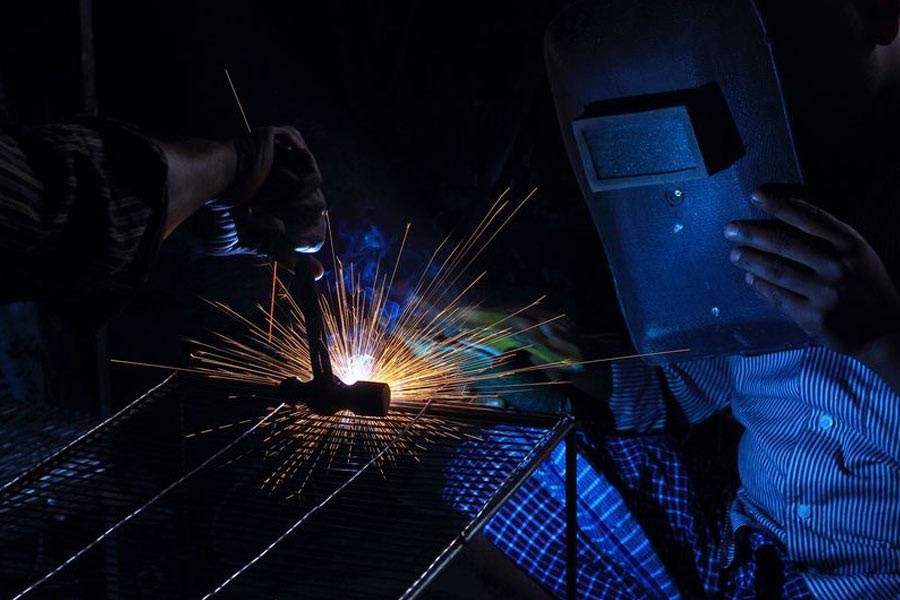
Published :
Updated :

It is a well-known fact that the country has quite a number of sectors and subsectors that have huge export potential and what they need is necessary policy, financial and technological supports to bloom and fetch foreign exchange. The light-engineering industry (LEI) is a manufacturing subsector that truly holds the promise to be a major export earner. In the immediate-past financial year (FY2020-21), the LEI did prove it. The industry had done even better in FY 2017.
In the last fiscal, the light-engineering exports fetched more than half a billion dollars. The amount was more---nearly US$700m---in FY 2017. The export revenues from the sub-sector, however, have always fluctuated, ranging between US$300m and US$500m. This highlights the fact that the LEI, despite having the potential, could not make much headway as far as the export market is concerned.
The size of the global market of light-engineering products is estimated at US$7.0 trillion and Bangladesh's share has been highly insignificant in that. But sector insiders believe that a two-to threefold increase in export earnings by the LEI within the foreseeable future is possible only if entrepreneurs involved in the sector are genuinely serious about making their mark on the global market and the government is equally interested in extending all possible supports to the sub-sector.
The LEI's importance does not remain confined to only export earnings. Its share in the GDP is estimated at 2.5 per cent. Naturally, with gradual expansion, its share would also go up. Moreover, it is one of the economic areas that can create substantial employment opportunities. The industry that meets nearly 30 per cent of local demand for light engineering products and earns half a billion US dollars from exports now employs an estimated 0.8 million people.
It is no denying that the products that the Bangladesh LEI manufactures are more or less basic and technologically not highly advanced. The truth is micro-enterprises, numbering about 50,000 across the country, dominate the industry. The number of small and medium enterprises is around 10,000. These enterprises do neither have the financial means nor the manpower to venture into anything big or advanced. For decades, they have been using outdated machinery and low-skilled manpower. The only exceptions are bicycle and electrical goods manufacturing units.
The micro-enterprises and SMEs have been supplying some goods to the country's industrial, agriculture and construction sectors. But these are mostly low-cost ones and meet only a small percentage of their requirements.
There could be a sea-change in the LEI only if the enterprises now in business got finance and skilled manpower. Even if the authorities took the right measures to meet the need for finance, it would be hard to fulfil the second one. Skilled manpower is not available locally. Nor there has been an effort to develop the same. The existing technical institutions and the industry itself do not have the qualified trainers to create manpower that can produce modern and high-end light-engineering products.
Export revenues are important, no doubt. But the country is heavily dependent on imports for light engineering products. It imports many basic and small tools, machinery and other products, mostly from China and India. For the LEI, it is not very difficult to produce those locally and save hard-earned foreign exchange.
However, lately, there has been a wind of change. Prime Minister Sheikh Hasina in January 2020 declared light engineering 'the product of the year' to draw priority attention of the relevant people to the sub-sector.
In line with the PM's emphasis, the industries ministry reportedly decided to set up light-engineering industrial parks in Dhaka, Narayanganj, Narsingdi, Jeshore and Bogura.
Such proactive moves on the part of the state are most welcome. But, prior to doing anything big, the government should offer all supports to the existing LE units, financially or otherwise. Since the PM's declaration, the world has experienced unprecedented havoc because of the Covid-19 pandemic. Thousands of small and micro enterprises have gone out of business, a good number of them permanently. Many LE units are among those. It is difficult to say whether the affected enterprises have received any financial support from the government or not.
Thus, the first and foremost job of the government will be to lend financial support to the LEI to help it regain strength. Then, there should be a well-knit strategy for developing the LEI keeping in view the demand for LE products both at home and abroad. Special measures need to be taken to create skilled manpower for the industry. Unless and until the second requirement is met, nothing will be in place.


 For all latest news, follow The Financial Express Google News channel.
For all latest news, follow The Financial Express Google News channel.